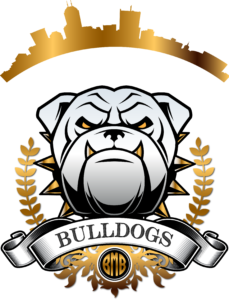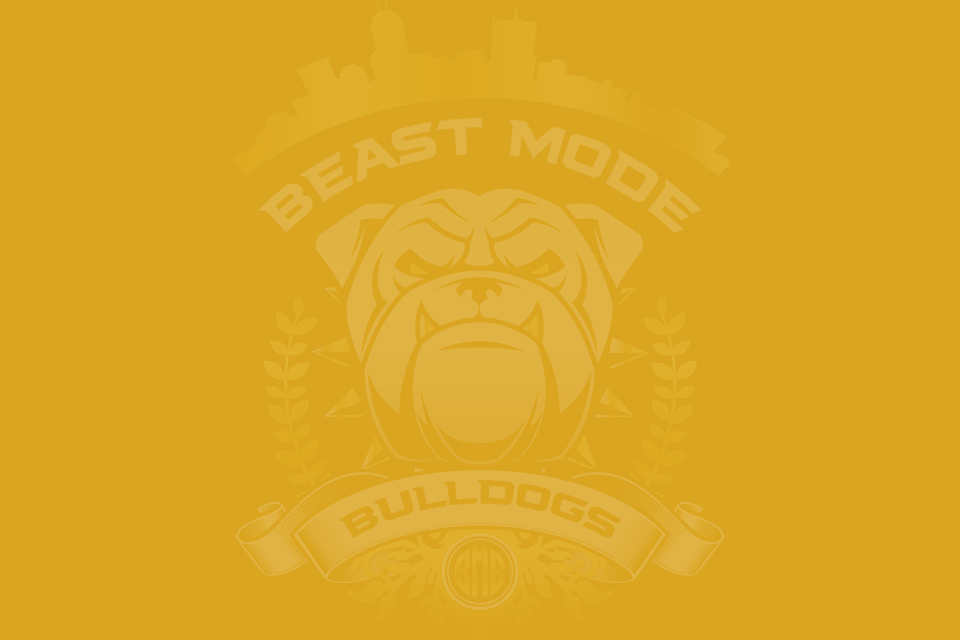History of the Bulldog

The then-fierce dogs were used in a practice called bull baiting, which involved the dog grabbing onto the bull’s nose and roughly shaking it. Bull baiting actually had a purpose; it was thought to tenderize the bull’s meat. For many years, this practice was said to “thin” the blood of the bull and make its flesh tender after it was butchered. This belief was so strong that many areas in England had laws requiring bulls to be baited before they were slaughtered.
More than that, it was a popular spectator sport in a time when there were no professional sports, TV shows, movies, or video games. The angry bull would toss the dog up in the air with its horns if it could, much to the delight of the watching crowd. The dog, on the other hand, would attempt to latch onto the bull, usually at its snout, and pin it to the ground through the force of its painful bite. Upcoming bullbaitings were advertised and crowds wagered on the outcome of the struggle. These early Bulldogs were taller and heavier than today’s Bulldog, and they were bred to be especially adept at this bloody sport.Typically, they crept on their bellies toward the enraged bull so he couldn’t get his horns under their bodies and toss them up in the air. And their wide mouths and powerful jaws were impossible for the bull to shake off once the Bulldog had a firm hold on its snout. His short, flat nose enabled the Bulldog to breathe while holding onto the bull’s snout. He needed to be tenacious to hang onto the bull no matter how much the bull tried to shake him off. The Bulldog’s high tolerance for pain was developed to enhance his ability to excel at this barbarous spot. Even the wrinkles on his head are said to have had a purpose: to direct the blood that resulted from his grip on the bull to flow away from his eyes so he wouldn’t be blinded. In 1835, after many years of controversy, bullbaiting was outlawed in England, and many thought the Bulldog would disappear since he no longer had a purpose. At the time, the Bulldog wasn’t an affectionate companion.
The most aggressive and courageous dogs had been selectively bred for generations to be bull-baiters. They lived to fight with bulls, bears and anything else that was put before them. It was all they knew. Despite this, many people admired the Bulldog’s stamina, strength, and persistence. These few decided to save the appearance and breed them to have a sweet, gentle temperament instead of the aggression needed for the baiting arena. And so the Bulldog was re-engineered. Dedicated, patient breeders started selecting only those dogs that had a docile temperament for breeding. Aggressive and neurotic dogs weren’t allowed to reproduce. By focusing their attention upon the temperament of the Bulldog, these breeders transformed the Bulldog into the gentle, affectionate dog we see today.
Breeders started showing Bulldogs in conformation shows in England in 1859. The first dog show that allowed Bulldogs to be shown was at Birmingham, England in 1860. In 1861, a Bulldog named King Dick won at the Birmingham show. One of his descendants, a dog named Crib, was later described as being “close to perfection.” In 1864, the first Bulldog breed club was formed by a man named R.S. Rockstro. The club had about 30 members and its motto was “Hold Fast.” A member of the club, Samuel Wickens, wrote the first breed standard, using the pseudonym Philo-Kuon.
The Bulldog’s breed standard reportedly was the first one written in the world. The club unfortunately disbanded after only three years. In 1875, another Bulldog club was founded, and it developed a breed standard that was similar to the Philo-Kuon. This breed club is still in existence. Bulldogs were brought to the United States, and a brindle and white Bulldog named Donald was shown in New York in 1880. A Bulldog named Bob was registered with the American Kennel Club in 1886. In 1890, H.D. Kendall of Lowell, Massachusetts founded The Bulldog Club of America. It was one of the first breed clubs to become a member of the new American Kennel Club. In the beginning, the club used the British breed standard, but thought it wasn’t concise enough, so they developed the American standard in 1894 for what they called the American-bred Bulldog.
The English protested about the name and also some of the items in the new standard. After a lot of work, the standard was revised and accepted in 1896. This standard is still used today. The American Kennel Club recognized the Bulldog in 1890. During the 1940s and 1950s, Bulldogs were close to the top 10 breeds in popularity. Today, the Bulldog ranks 12th among the 155 breeds and varieties registered by the AKC, a tribute to his solid credentials as a companion. More than anything else, the Bulldog is a triumph of the human ability to rehabilitate an entire breed and make it into a desirable, affectionate companion through thoughtful, dedicated breeding practices. In the 1800s, cities such as Rome passed laws that Bulldogs couldn’t be walked on the streets even on leash due to their ferociousness, and yet, a few years later, the Bulldog was already becoming known as one of the friendliest and most tranquil of dogs. All because some dedicated breeders had patience, knowledge, and a vision of what the Bulldog could be at its finest.

